Hanuman: The Revered Monkey God in Hindu Mythology
The revered monkey god Hanuman is one of the most iconic in Hindu mythology. He embodies unparalleled strength, unwavering devotion, and boundless...
Maya M. Tola 19 September 2024
One of the most famous woodblock printers of the late Edo period in Japan, Utagawa Hiroshige, produced a series of a hundred views showing Edo city (today’s Tokyo) from unusual viewing angles, which revealed the hidden beauty of everyday situations and places.
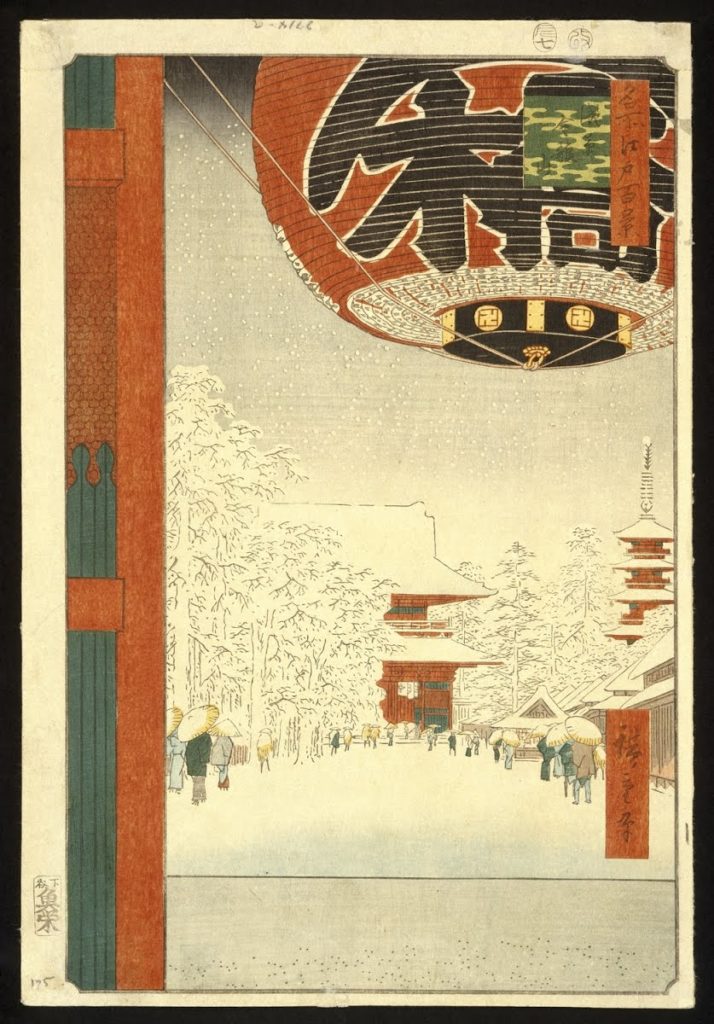
The winter group of the series, numbered from 99 up to 118, begins with the Kinryūzan Temple at Akasaka dedicated to the Buddhist deity Kannon in Asakusa, the oldest and most venerable Buddhist temple in Edo. The season results clear from the skillfully rendered snow, look at individual snowflakes drifting through the sky, while on the roof of the titular temple, heaps of snow are added for visual effect.
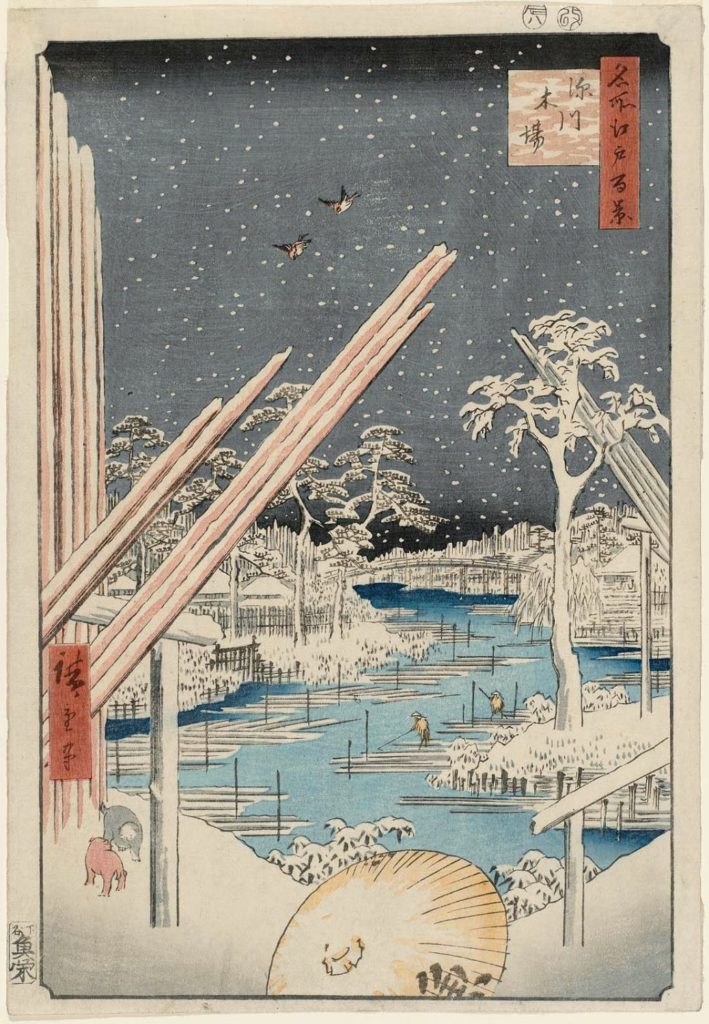


The Japanese mastered mindfulness way earlier than the Occidentals found a name for it. Admiring nature and its spiritual and calming qualities, they have names for natural phenomena which the Occidentals cannot conceive (like a word describing light filtered through the tree leaves…). Nature has always offered an opportunity for the leisure activity of “admiring:” in spring they have sakura, the cherry blossom, and in winter there is snow. The winter admiring activity usually involved additional wine drinking.
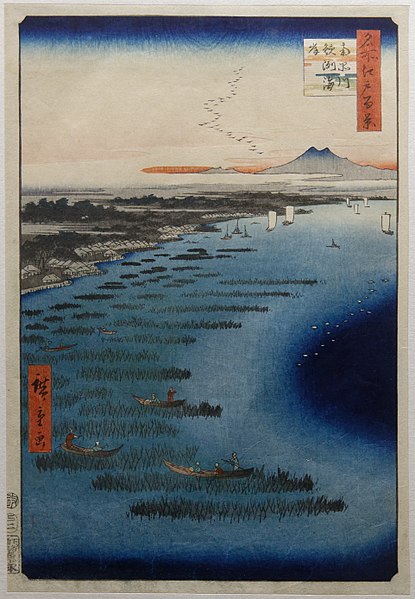 Hiroshige, Minami-Shinagawa and Samezu Coast, No. 109 from One Hundred Famous Views of Edo, 1856, Brooklyn Museum of Arts, New York, NY, USA.
Hiroshige, Minami-Shinagawa and Samezu Coast, No. 109 from One Hundred Famous Views of Edo, 1856, Brooklyn Museum of Arts, New York, NY, USA.

I came out, and looked after—
to see the hemp-white of Mount Fuji’s lofty peak
under a flurry of snow.Poem by Yamabe no Akahito translated by Steven D. Carter), early 8th century, in: Traditional Japanese Poetry: An Anthology, Standford: Stanford University Press, 1991, p. 207, no. 418.
In the woodblock print above we can see Mount Fuji surrounded by snow, looking down at the bay, and boats peacefully sailing to their destinations.
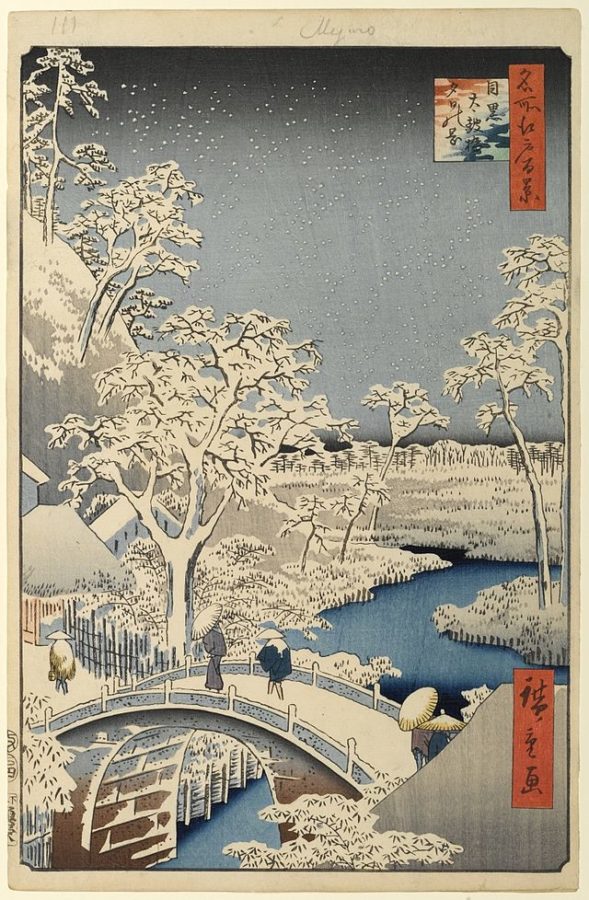


The theme of cold weather and the melancholy that it brings was possibly the most diffused in the series.
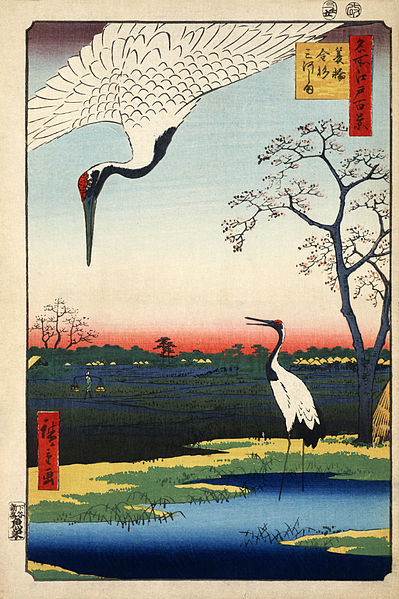


Another motif associated with winter often found in the woodblock prints is the crane, a symbol of longevity, celebrated in the annual crane hunt of the shogun.
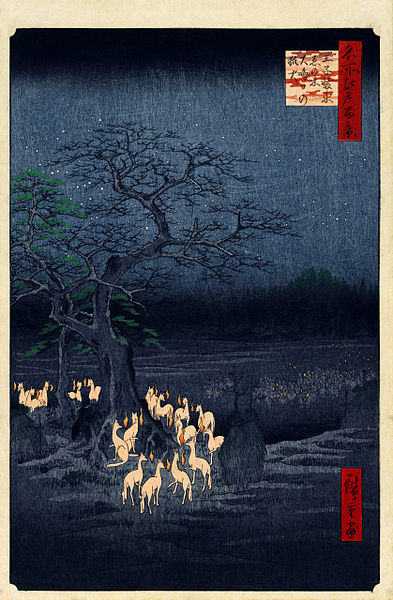


Winter would officially end with the celebrations of the coming of the new year, signified by the auspicious ringing of Buddhist temple bells and festivities filling the air with light.
DailyArt Magazine needs your support. Every contribution, however big or small, is very valuable for our future. Thanks to it, we will be able to sustain and grow the Magazine. Thank you for your help!